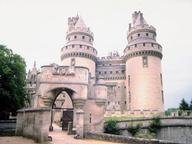Quiz Answer Key and Fun Facts
1. In historical romance novels, the heroine is usually beautiful or at least alluring to the hero. How else is she generally depicted?
2. The hero in a historical romance is always sensual and magnetic. He is also usually characterized in all of the following ways EXCEPT:
3. Historical romances rely on faraway locales. Which setting is not common in these novels?
4. A connecting storyline, enlivened by vivacious dialogue and steamy romance, drives the action along. What is NOT a typical historical romance novel plot?
5. Though we all know that the romantic leads will unite in the end, how do the hero and heroine usually feel about one another in the beginning?
6. Some of our most beloved classics were actually branded romance novels in their time. Which of these classics was NOT considered to be a romance novel?
7. Which classic literature character is the prototype for modern romance novel heroes?
8. What is the most important literary element of the historical romance novel?
9. Jude Deveraux's "Remembrance" is a romance novel about a romance novelist. In it, the main character shares that all writers know that some male names are "virile", while others are not. Which name is probably not virile enough to be the name of a romantic hero?
10. According to the Romance Writers of America, what must every historical romance novel do?
Source: Author
pagiedamon
This quiz was reviewed by FunTrivia editor
agony before going online.
Any errors found in FunTrivia content are routinely corrected through our feedback system.

